| Early
Life ( 1783 -1806 )1
William
Constable was born on 5th April, 1783 in Horley, Surrey, where
his father James Constable (1749-1838) owned the local watermill
and earned his living milling flour, weaving cloth and selling
a variety of goods from his 'general stores' shop. William had
very little formal education, apart from a few months at a school
in Oxted. Instead of schooling, William's boyhood was spent
assisting his father in his various trades.
At
the age of 14, William left home and went to work as an assistant
to Henry Browne, who ran a drapery business in Lewes, Sussex.
Mr Browne, described as "an intelligent and informed man"
had his own printing press and private chemical laboratory and
encouraged William's artistic and scientific interests.
(RIGHT)
William Constable,daguerreotype self-portrait [ c1845] .PRIVATE
COLLECTION
The photographic portraits
we have of Constable show him as an old man. Contemporary accounts
state that when he was young ,
he was described as " tall and remarkably handsome."
podio
|
1 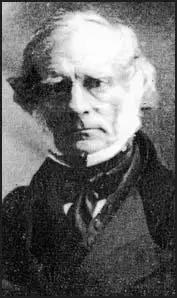 |
William Constable in Brighton ( 1802-1806 )
In May 1802, the nineteen year old William joined his older brother
Daniel in Brighton. Daniel Constable (1775-1835) had
just opened a draper's shop at No 3 North Street, Brighton and William
became his assistant. Later that year, William designed and produced
a "New and Correct Plan of Brighthelmstone" (Brighton),
which advertised their business and gave directions to their shop
in North Street. The combined map and business card was engraved and
printed by Thomas 'Clio' Rickman, a friend and biographer of Tom Paine
(1737-1809) the revolutionary republican who had once lived and worked
in Lewes.
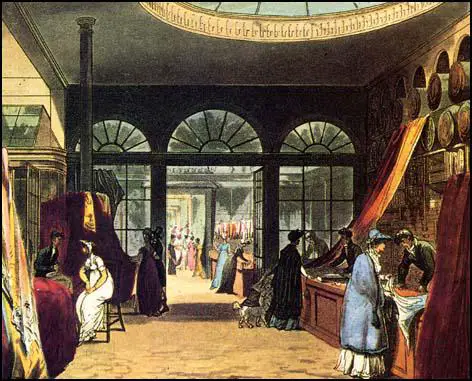
A
draper's shop in the early 1800s.The Constable brothers sold their
shop in Brighton to James Ireland in 1806.
In his youth, William Constable was noted for his sense of fun and
eccentric behaviour. The Brighton Herald gives examples of
"a few eccentricities, springing from the buoyancy of youth
and originality of mind.":
Constable "kept a large black Newfoundland dog which ran about
the town with a large eye-glass round its neck in ridicule of a prevailing
foppery of the time. On another occasion William, unknown to his brother,
set up an electrical machine in the back room, connected by conducting
wires with various parts of the shop, and occasionally amused himself
by giving an unexpected shock to a customer as she opened the door
or took up a chair . . ." "We have frequently heard Mr Constable
say it was nothing unusual for them to close their shop and put up
a notice - "Gone for a holiday. Back next week."
After four years, the Constable brothers sold their flourishing drapery
business (later to evolve into Hanningtons of North Street, which
became one of Brighton's largest department stores) and used the proceeds
to finance a journey to America.
First Journey to America (1806-1808)
In 1806, William and Daniel Constable sailed for New York. After a
two month voyage, the brothers arrived in New York, where, armed with
an introduction from 'Clio' Rickman, they paid a visit to the exiled
revolutionary Thomas Paine.
During their stay in America, the Constable brothers travelled over
7,000 miles. First they travelled by foot through the State of New
York to Niagara Falls. At Niagara, William made a number of sketches
of the Falls. Throughout the journey, William Constable made drawings
of the spectacular American landscape. These sketches were later worked
up into finished watercolours and exhibited in England.
William and Daniel moved on from New York State to Pennsylvania. In
Pittsburg, they purchased a flat-bottomed boat, in which they planned
to voyage south to the Gulf of Mexico. In their flat-bottomed boat,
the Constable brothers made their way down the Ohio and Mississippi
Rivers to New Orleans. The two brothers stopped off at Big Beaver
Creek, where William assisted a group of settlers by surveying and
laying out the site of a new town.William Constable gave the town
the name of 'New Brighton' in tribute to the seaside town in Sussex,
which had recently been their home.
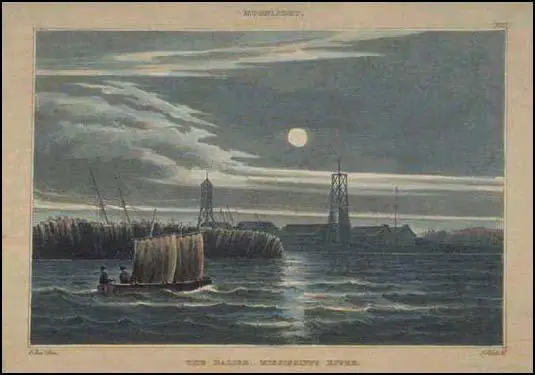
A
19th century print showing a flat-bottomed sailing boat on the Mississippi
River.
After
an eventful 3,000 mile river journey the two brothers arrived in New
Orleans. Travelling by foot and on donkey, the two brothers crossed
the Allegheny Mountains and returned overland to New York, from where
they eventually sailed to England.
William and Daniel returned to England after spending two years in
the New World. After arriving at Plymouth, the two brothers walked
all the way to their family home in Horley.
William Constable had brought back to England, the sketches he had
made of the American landscape. The Brighton Herald reported that
some years later Constable used these sketches to make finished watercolours
of the "striking features of the New World." The
Herald recognised the historical interest of these paintings, noting
that "many places now seats of a numerous and thriving population,
having been a beautiful wilderness when visited by the two brothers."
In America, William had also obtained a tooth of a prehistoric mastodon,
which he presented to Gideon Mantell of Lewes. Mantell, who later
made his reputation as a geologist, claimed that Constable's fossil
inspired his "first impulse to scientific enquiry."
The Years in Surrey (1808-1816 )
On his return to Horley, William Constable used his technical skills
to rebuild the family watermill on the River Mole. A commemorative
plaque records that "William Constable superintended the Building
of the Mill, drew all the Plans, saw it completed, and then worked
in it as a Grinder." In partnership with his younger brother
Charles Constable (1786-1867), William took over the running of Horley
Mill. The inscription on the plaque indicates that the brothers remained
the proprietors of Horley Mill for the next half century. (In the
1851 Census, William Constable gave his occupation as "Flour
Manufacturer and Heliographic Artist")
| 1Commemorative
Plaque to William Constable (1858)
dio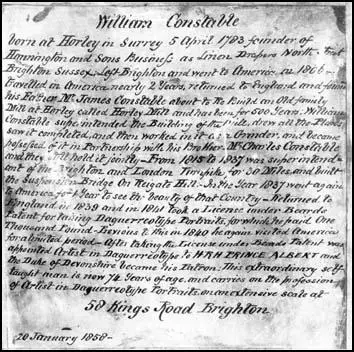
|
1William
Constable
born at Horley in Surrey 5
April 1783 - founder of Hannington and Sons Business as Linen
Drapers North Street, Brighton, Sussex;
Left
Brighton and went to America in 1806 - travelled in America
nearly 2 years, returned to England and found his Father Mr
James Constable about to Re Build an Old family Mill at Horley
called Horley Mill and has been for 500 years. William Constable
superintended the Building of the Mill, drew all the Plans,
saw it completed and then worked in it as a Grinder, and became
Possessed of it in Partnership with his Brother, Mr Charles
Constable and they still hold it jointly - From 1815 to 1837
was superintendent of the Brighton and London Turnpike for
30 Miles, and built the Suspension Bridge on Reigate Hill,
In the Year 1837 went again to America for 1Year to see the
beauty of that Country - Returned to England in 1839 and in
1841 took a License under Beard's Patent for taking Daguerreotype
portraits, for which he paid One Thousand Pound -Previous
to this in 1840 he again visited America for a limited period
- After taking the License under Beard's Patent was appointed
Artist in Daguerreotype to HRH PRINCE ALBERT and the Duke
of Devonshire became his Patron.This
extraordinary self taught man is now 74 Years of age and carries
on the profession of Artist in Daguerreotype Portraits on
an extensive scale at
58
Kings Road Brighton
20
January 1858
|
While working at Horley Mill, William Constable was involved in a
tragic boating accident. In November 1811, Constable took Volney Rickman,
the 14 year-old son of 'Clio' Rickman, out on a sailing boat on the
River Mole, The boat capsized and Constable was not able to save the
lad from drowning. In the words of one report, Constable "held
the boy above water for some time, but had to let him go before reaching
the bank."
In 1816, William Constable married Jemima Mott, the 30 year-old niece
of Robert Mott of Brighton. After 13 years of marriage, Jemima died,
leaving William a childless widower.
Surveyor and Civil Engineer 1816-1836
At the time of his marriage, William Constable was Superintendent
of the Sutton and Reigate Turnpike Trust and in 1818 he was appointed
"Surveyor to the Turnpike Trustees of the London to Brighton
Roads." In his role of Surveyor, Constable was responsible for
a 30 mile stretch of road, the construction of the tunnel under Reigate
Castle and the design and building of the suspension bridge at Reigate
Hill. Built in 1823 under Constable's supervision, the Reigate Castle
Tunnel is believed to be Europe's first road tunnel. The Reigate Hill
Suspension Bridge, although small, was of a novel design. A local
newspaper reported "It is a very light and fairy-like structure,
and the first chain was pulled across by the fair hands of four and
twenty young ladies, to each of whom Mr Constable presented a pair
of white kid gloves for the occasion."
Living
at Dovers Green near Reigate, Surrey, William Constable held the post
of 'Surveyor of the London and Brighton Turnpike Road' for twenty
years.

Reigate
Castle Tunnel (c1910)
.William
Constable constructed the road tunnel under the grounds
of Reigate Castle in 1823.
Constable's second and third trip to America and
his return to Brighton (1837-1840)
In 1837, William Constable was appointed engineer for a proposed railway
in Jamaica. Constable sailed again for North America, intending to
travel down through the States to New Orleans where he proposed to
take a ship to the West Indian island. While he was in America Constable
was informed that the Jamaican Railway project had collapsed, but
he chose to remain in America for one year "to see the beauty
of that Country."
William
Constable had established family connections with North America. William's
brother Daniel had returned to the States in 1820 and in 1830 he had
applied for American citizenship. Daniel Constable eventually settled
in New York State, but had died on a visit to England in 1835, two
years before William's second trip to America. William's sister Mildred
had emigrated to North America with her husband,John Purse, in 1819.
They had settled in Indiana, but they found frontier life difficult
and had relocated to Pittsford, New York by the time William arrived.
On his return to England in 1839, William decided once more to make
his home in Brighton. It had been many years since Constable had last
lived in Brighton, but his name and exploits had not been forgotten
by the inhabitants of this seaside town. As the Brighton Herald commented,
Mr Constable "renewed his connection with Brighton . . though
he had long been known to us as a half mythological personage of a
remote period of our lives."
As
a young man, William Constable proved to be a flamboyant showman.
In his history of the seaside town, 'Life in Brighton', Clifford
Musgrave recounts an episode that took place in the Pleasure Gardens,
which were then situated near the Level, where Constable promised
he would fly the length of the grounds.
"William Constable . . . was ardently devoted to scientific novelties,
and one day publicly announced by the town crier that he would fly
from the top of the Assembly Room to the extreme end of the grounds.
A scaffolding was erected on the roof of the building, and from it
a wire stretched to the bridge by the Maze. A large crowd assembled
to watch the promised feat, and after a long wait Constable appeared
attired in 'light-fleshings' with Zephyr-like wings and ascended the
scaffold. After the firing of guns from a near-by mimic fort, Constable
glided gracefully down the sloping wire hanging from a pulley to which
he was attached, waving a flag in each hand. A great many people who
had paid to see the performance, already exasperated by the long wait,
felt that it had fallen short of what was advertised, and closed in
threateningly upon the performer, but he was quickly unfastened from
the machinery and took his flight through the Maze, the intricate
turnings of which were no doubt familiar to him." [ Life
in Brighton, p 223 ]
A
childless widower, William Constable established a residence at 16
Egremont Place, Brighton where he lived with two unmarried nieces,
Caroline and Eliza Constable and a single house servant.
William Constable had been an inventor throughtout his life and in
1840 he made a third visit to America to promote various scientific
devices, including a pulley and wire mechanism designed to rescue
people from burning buildings and wrecked sailing vessels. It is possible
that on his third and final visit to America, William Constable had
the opportunity to observe the work of early American daguerreotypists
and see the commercial potential of portrait photography.
William
Constable and the Photographic Institution of Brighton ( 1841-1861
)
According
to a contemporary newspaper, " Mr Constable ...was always
ready to entertain beautiful applications of scientific principles"
and was fascinated with the new invention of photography "
then called Daguerreotype."
When William Constable returned to Brighton after his last visit to
America, he entered into negotiations with Richard Beard, who
was about to receive the patent rights to the daguerreotype
process in England. By June 1841, Beard had sold the licence to take
daguerreotype portraits in Brighton to William Constable for the considerable
sum of one thousand pounds.
William Constable opened Brighton's first photographic portrait studio
in 57 Marine Parade on 8th November 1841. Named "The Photographic
Institution", Constable's studio was situated on the seafront,
where Atlingworth Street joins Marine Parade. The room where Constable
took his photographic portraits had a glazed roof and was fronted
by plate glass. The proprietor of the Photographic Institution claimed
that the glass he employed in his south-facing studio, broke up the
prismatic rays of light "admitting only the blue tint".
Inside the operating studio, which he named "The Blue Room",
Constable set up a revolving platform on to which he placed his subjects.
With the aid of this apparatus, Constable was able to turn his sitters
to get the required light effects for his portraits.
Armed with an exclusive daguerreotype licence from Beard, Constable
enjoyed a monopoly in the production of photographic portraits in
Brighton for ten years. Made famous by making the first photographic
likeness of Prince Albert, Queen Victoria's consort, in March 1842,
The Photographic Institution of Brighton became the fashionable
place for aristocrats and members of the Court to have their portraits
taken. Looking back over the first six years of his photographic portrait
business, Constable wrote in 1848 that he "had many sitters
from the ranks that are called noble" and went on to mention
that he had made portraits of Viscount Jocelyn, the Duke of Montrose,
the Marquess of Abercorn and the Duke of Devonshire, together with
their wives.
It must have been strange for Constable, the son of a "country
shopkeeper" and a man without a formal education. to find himself
playing host to members of the Royal Family and leading figures of
the British aristocracy. However, Constable's keen intelligence and
attractive personality apparently compensated for any perceived lack
of education and breeding.More than one account refers to Constable's
considerable personal charm. A contemporary report states that Constable
was "most attractive and agreeable in manner" and
that his "amiable disposition made him a favourite with everybody."The
Brighton Herald newspaper mentions that many of Constable's
distinguished clients "were so charmed with the man, that
more than once they called in at his 'blue room' merely for the pleasure
of his society".
William Constable worked as a photographic artist in Brighton for
twenty years. After his death, one of William's nieces, either Caroline
or Eliza Constable, carried on taking photographic portraits at his
studio at 58 King's Road. Constable's photographic studio was listed
in a Brighton Directory for the last time in 1865.
Constable
the Inventor
|
Although
he had spent only a few months at school, William Constable
had a natural intelligence and an inventive mind. In the words
of the Brighton Herald "his active intellect soon
mastered all that came before him."
Early in his adult life, William Constable demonstrated
his self-acquired skills as a cartographer, surveyor, engineer
and draughtsman. As Surveyor of the London and Brighton Turnpike
Road, Constable supervised the construction of Europe's first
road tunnel and designed a suspension bridge, which according
to a local newspaper "was amongst the earliest structures
of the kind in this country". Constable was also the
originator of a method of hypsometrical drawing which had applications
to the work of surveyors and engineers.
The
Brighton Herald wrote of Constable's "mechanical
genius." In the Machinery Section of the Great Exhibition
of 1851, Constable showed his model of a 'Compensating Fly Wheel',
which he had designed to improve the working of steam engines.
The inventor claimed that his patented 'Compensating Fly Wheel'
served "not merely to improve, but perfect the action
of the Reciprocating Steam Engine"C
d
|
1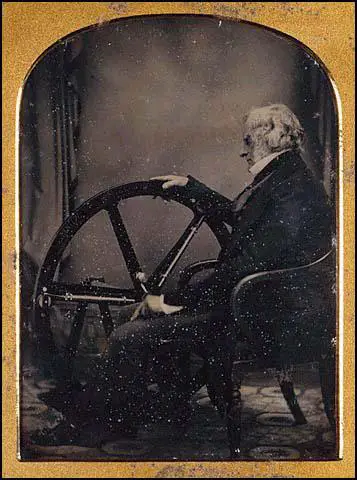
A
daguerreotype self portrait of William Constable with his
model of the "Compensating Fly Wheel", which he
showed at the Great Exhibition of 1851 [GETTY
MUSEUM]
|
Constable's
Wide Range of Interests
William Constable was very
much a self-educated man and although he had a limited formal education,
he was an avid reader and had a considerable collection of books in
his library "on subjects most suited to his tastes".
Throughout his life Constable had a wide range of interests. An
amateur botanist and ornithologist, Constable was also an active member
of the Natural History Society since its inception in 1855. On his
visits to America, Constable was always on the look out for interesting
fossils and rock samples. On his last trip to the New World, Constable
carried a specimen of chalk "500 miles in his hand, fearing
it might be broken" on the journey home.
Constable took a full and active part in the social and cultural life
of the town. He was a committee member of the Literary and Scientific
Institution and regularly displayed his photographs at 'Soirees'
held at the Pavilion Rooms in the 1850s. Constable also exhibited
examples of his work at the Brighton Art Society's 'Conversaziones'
towards the end of his life.
Death of William
Constable
William Constable died at
his home in Egremont Place,Brighton on the morning of Sunday 22nd
December 1861, at the age of 78. A tribute to William Constable, printed
in the " Brighton Herald " soon after his death,described
him as a "remarkable" and "excellent man"
and concluded that " his memory will be ...cherished with
affectionate regard by all who knew him." William Constable
was buried in St Bartholomew's churchyard at Horley, next to the remains
of his wife, Jemima, who had died 32 years previously.
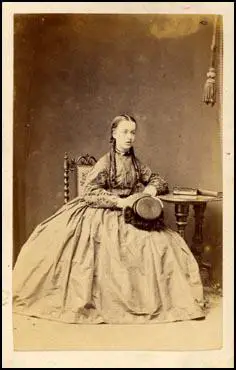
[ABOVE] Carte
de visite portraits taken at Constable's photographic studio
at 58, King's Road, Brighton after the death of William Constable
in 1861.
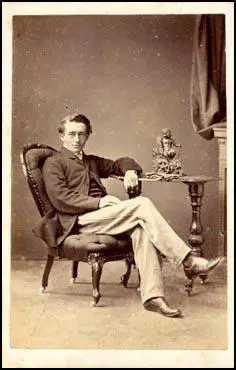
|
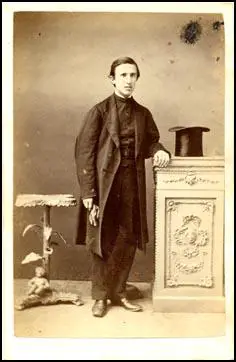
ABOVE]
Carte de visite portrait taken at Constable's photographic
studio at 58, King's Road, Brighton .
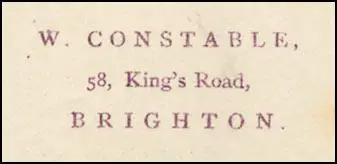

|
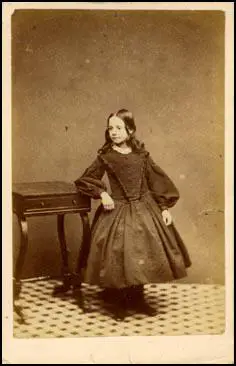
ABOVE]
Carte de visite portrait taken at Constable's photographic
studio at 58, King's Road, Brighton .
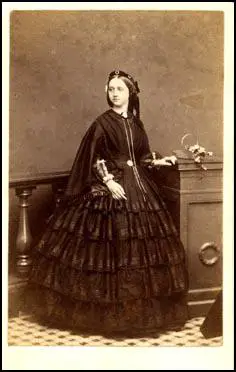
|
Acknowledgements and Bibliography
William Constable, Brighton's
First Photographer by Philippe Garner
[ HISTORY OF PHOTOGRAPHY, Vol 15, No 3 . Autumn 1991
pp 236-239]
For
more information on William Constable and his family see 'The Constables
of Horley Mill' website at :
http://www.theconstablesofhorleymill.com